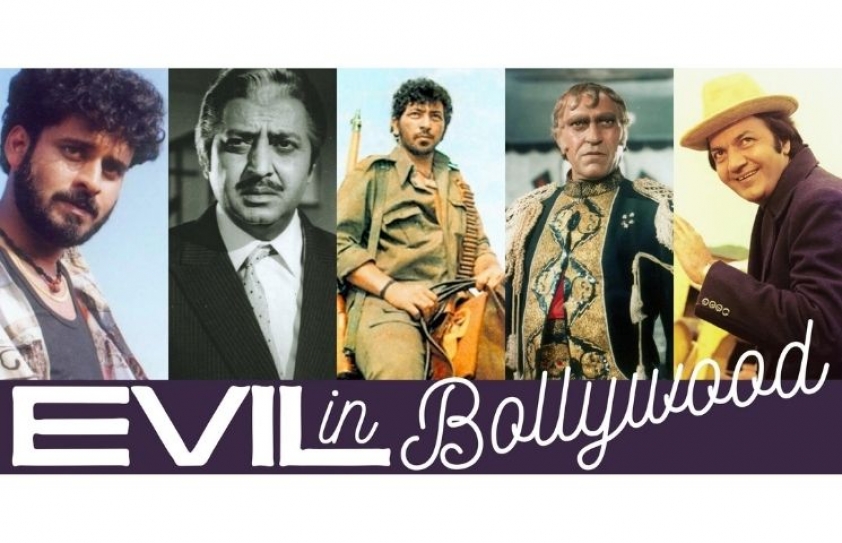
A Few Bad Men (and Women): The Journey of the Villain in Hindi Cinema
by Shantanu Ray Chaudhuri November 14 2021, 12:00 am Estimated Reading Time: 10 mins, 10 secsNational Award-winning Balaji Vittal speaks to Shantanu Ray Chaudhuri on his new book, Pure Evil: The Bad Men of Bollywood
Imagine Star Wars without Darth Vader - or Harry Potter without Voldemort, the Avengers without its galaxy of villains, Ultron, Red Skull and Thanos, or closer home, Sholay without Gabbar Singh, Mr India without Mogambo, or Kalicharan without its ‘loin’ and Ardh Satya without Rama Shetty. The best of our cinema, the bravest of our heroes, are often a product of how good the villain is. It’s the villain - a tangible person or even an indefinable conflict (psychological, ideological) - who drives the narrative and makes us root for the hero.
In the seventy-five years of our independence, the villain in Hindi cinema has evolved constantly with the times. From the moneylender and zamindar of the 1950s, to the suave lowlife interested in primarily the heroine and her wealth, epitomized by Pran, in the 1960s, to the smuggler of the 1970s, the terrorists and politicians of the 1980s, to a more nebulous character in the new millennium.
Balaji Vittal, whose previous works (with Aniruddha Bhattacharjee) include the National Award-winning R.D. Burman: The Man The Music, and the MAMI Award-winning Gaata Rahe Mera Dil: 50 Classic Hindi Film Songs, as also S.D. Burman: The Prince Musician, takes us on a riveting journey through the many villains in Hindi cinema who have made the world of our cinematic heroes and heroines difficult and our cinemas infinitely enriching.
Villains in Hindi cinema - that’s a huge ground to cover. Tell us something about the process of research and writing for the book.
I was all over the place to start with. Without drafting the story structure and the chapters, I started writing up mini-biographies of actors like Pran, K.N. Singh, etc., before realizing my folly - this was meant to be book on villain characters and their villainy and not a collection of actors’ biographies. I retraced my steps and started all over again and began conducting interviews with actors and filmmakers. They shared a wealth of information with me but then there was no story to weave that valuable information into.
That was when my project guide Kaushik Bhaumik asked me to, first and foremost, segment the villains into various categories like foreigners, zamindars, dacoits, mafia, etc. Another friend, Amitava Chatterjee, asked me write down the gist of each chapter in no more than 8-10 sentences as that would form the core of the story in the author’s own words. These inputs gave the manuscript a footing. I made a laundry list of movies spanning decades and went on a movie-watching binge. I also started reading up biographies, film-based books that touched the topic of villainy and archival print and video interviews. I picked up old magazines from footpath shops in Daryaganj, Delhi. Specifically for the section on psychotics and psychopaths, I read up relevant sections of online medical journals and consulted a well-known Kolkata-based consultant psychologist. All the while I continued travelling widely, interviewing actors, filmmakers, scriptwriters and experts to get anecdotes and opinions about the evolution of villainy.
When I submitted the first cut of the manuscript to HarperCollins in July 2019, the editor, Rinita Banerjee, pointed out something very obvious that I had missed. In my eagerness to cover a wide range of films, the narrative was skimming the surface of the characters and their villainy and the nuances weren’t getting fleshed out. I had compromised on depth for breadth and the manuscript needed to be, practically, rewritten.
I did so at a furious pace starting September 2019 and it paid dividends because the characters were now breathing. I was still confident of a 2020 release. But then… the world came to a grinding halt in March 2020. With no likely release date in sight, I used the additional time to hone and sharpen the manuscript many times over. And here we are finally - the book, the working title of which was A Few Bad Men has been published as Pure Evil - The Bad Men of Bollywood.
14.jpg)
The nature of the villain in Hindi cinema has evolved with the decades. For example, the upright politician of the 1950s became the villain in the 1980s… What’s your take on this in the backdrop of the book?
Yes, Indian cinema has always mirrored both the society and the individual, following the course of history, in terms of the socio-economic and political changes we have gone through. Cinema could be described as the most tangible portrayal of the paradox of good and evil. And that is what I have tried to portray in Pure Evil.
Till the late 1970s, we rarely see a corrupt policeman. And then from 1980s onwards, the on-screen policeman descended from good to corrupt to criminal to ridiculous. The same was with the politicians. The politicians in Baharon ke Sapne, Mere Apne and Aandhi were no more than political manipulators at worst. But check out films like Fiza (2000) and Satta (2003), in which politicians were practically indistinguishable from the mafia. In fact, they were worse than mafia - Don Vito Corleone of The Godfather and Dharamdas of Dharmatma stayed away from drugs business. But for MP Brar in Udta Punjab (2016), drugs is his business.
Talking of mafia, the book traces the genesis right from the late 1940s onwards. Initially we had small groups of hoods, indulging in black marketing. And then, the high import duties gave rise to the smugglers starting the mid-1960s, diversifying into gambling, antiques, national secrets, charas and illegal poaching in the 1970s. And then, in the new millennium came the trickster -thieves in films like Bunty aur Babli, Dhoom series, Race series, etc.
Pure Evil tracks these evolutions very closely. Another example of the book tracing the evolution of a genre of villainy is the foreigner villains - in this, this book tracks the shift not only from the British to the Chinese to the Pakistanis - but also from war to insurgency with Pakistan’s ISI emerging as an agency of evil.
If you were asked to list the top 5 memorable villain characters and actors that you have come across in the course of the research?
The best 5 from the ones I personally interviewed are Bheeku Mhatre (Satya, Manoj Bajpayee), Amol (Khamosh, Amol Palekar), Maharani (Sadak, Sadashiv Amrapurkar), Kancha Cheena (Agneepath, Danny Denzongpa) and Virus (3 Idiots, Boman Irani). I got sharp insights into these characters during the course of my interviews with them.
And the 5 most underrated ones - the characters we need to remember, but are not really spoken of when we discuss the villain.
Once again, from the ones I interviewed: Luke Morrison (Kay Kay Menon from the unreleased Paanch), Hemanta Roy (Kulbhushan Kharbanda in Andhi Gali), Dr Aarti Mahajan (Tisca Chopra in Rahasya), Sundar Yadav (Yashpal Sharma in Gangaajal), the femme fatale advocate (Rohini Hattangadi in Mohan Joshi Hazir Ho!). In the galaxy of villains, these subtle ones have got less than their share of credit. My suggestion to film lovers would be to check out these ones.
Vamps have been an integral part of Hindi cinema - could you share your experience of this as part of writing the book.
I was fortunate that Bindu Zaveri and Simi Garewal shared with important insights on how the vamp has been featured in Hindi films. They also shared how their pivotal roles in landmark films like Do Raaste and Karz came about. Pure Evil also analyses how the standard vamp that fetched a drink for her boss changed into subtler (and deadlier) shades. From being mere eye candy, they grew in stature to become femme fatales with their own exclusive space in the story. And there emerged the distinct lady villain.
Any remarkable discovery that you made during the book - either in terms of an individual character or an actor - that you were not aware of and would like to share with our readers?
The most remarkable discovery was the realization that I knew so little about Hindi films. I was humbled and had to become a student and a fanboy, and watch the films with a fresh pair of eyes. And there were scores of films that I had at best been vaguely aware of - a few that I had not even have heard of. I owe it to my friends who made me aware of these rare gems that enriched the manuscript. My previous books (co-authored with Anirudha Bhattacharjee) had a more or less defined list of films to write about. Pure Evil is an endless ocean with no definite list. I have put my heart and soul into it and hope the readers like it.
K…K…K… Kiran - The Psychotics
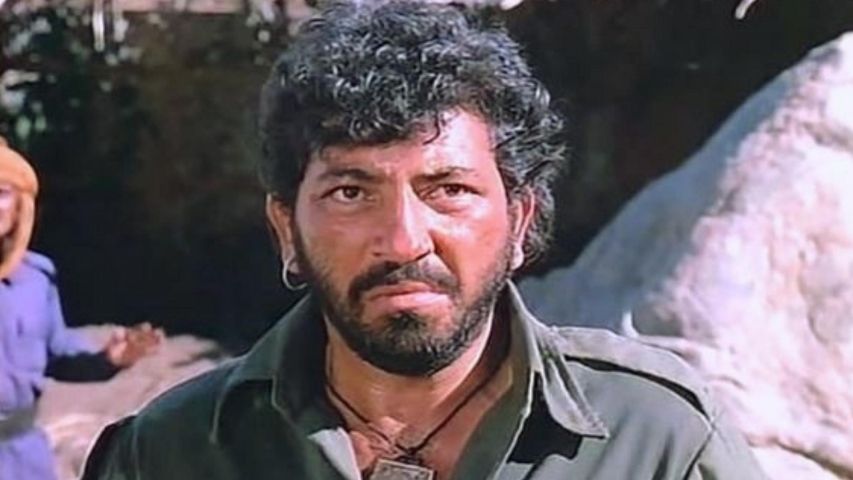
Remember Kunwar Saheb (Premnath) in Teesri Manzil (1966)? He commits three murders. Kunwar Saheb’s wife catches him red-handed in bed with another woman. In the ensuing tussle, the gun goes off, killing Kunwar Saheb’s wife. But there happen to be two ‘accidental’ witnesses to the crime and Kunwar Saheb has to kill them too. Amol (Amol Palekar) in Khamosh (1985) too commits four murders. Soni (Soni Razdan) gets pregnant with Amol’s child and she threatens to expose him, an eventuality that could ruin Amol’s chances at the election he is planning to contest. Amol kills Soni and is in a similar bind, as he has to now dispose of three more witnesses. Both Kunwar Saheb and Amol are killing for pragmatic reasons. So, what is the difference between Kunwar Saheb and Amol? Kunwar Sahab demonstrates a sincere sense of remorse. He admits that his crimes have bought him a ticket to the gallows - and he prefers to atone for his sins by leaping to his death. Whereas in Amol’s case, he progressively develops an insensitivity and, in the climax, actually admits, ‘Ab to mujhe ye sab karne me mazaa bhi aane laga tha (By now I had started enjoying killing),’ he admits. In other words, he’s become a psychopath.
Amol Palekar recounts a little-known fact about the climax in the film (the one in which Shabana discovers that Amol is the killer and Amol captures her) that illustrates the mental condition of the character Amol, ‘the original climax scene was set on a golf course. And then, while going through the script at Vidhu’s place with editor Renu Saluja and Sudhir Mishra, I said, “Vinod, I have an idea. Now, instead of the standard loud announcement of ‘I am going to kill you!’ what if, in a whispered tone, I give a very factual, step-by-step cold description to Shabana of how I was going to kill her? Would the effect be more threatening and more blood chilling? Vinod and Renu got very excited and asked Sudhir to rewrite the final scene based on my idea. And Sudhir went into another room and started rewriting the scene. All this was a very collective effort. Also, director Vidhu Vinod wanted this cold menace.”
This coldness made the difference. ‘Daro mat, Shabana. Shabana, mere paas aao (Don’t be scared, Shabana. Come to me, Shabana),’ Amol calls out to her in a whisper, smiling when she tries to hide and slither away from him. His left eye twitches, and eyeballs bulge. ‘Mai majboor hoon. Ab to mujhe tumhari jaan leni hi padegi na? Tum samajhti kyon nahi? Huh? (I’m in a fix. I have to end your life now. Why don’t you understand?),’ he explains in a silky soft voice, the way a caring parent would explain to a child why it needed to be admonished. It showed an inner medical condition as opposed to a common villainy. And Amol Palekar was a middle-of-the-road hero who preferred to play unconventional roles like these.
The book is available on preorder at:
https://www.amazon.in/dp/935489318X/ref=cm_sw_r_apan_glt_fabc_23AWM64ZVA68WK4B8D3E




-173X130.jpg)
-173X130.jpg)
-173X130.jpg)
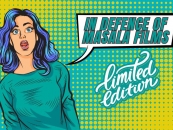
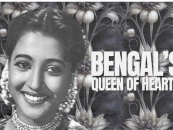
-173X130.jpg)
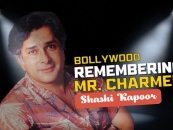
-173X130.jpg)